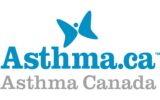Asthma and Children in Canada
Around 12% of Canadian children, approximately 900,000, live with asthma, making it the most common chronic respiratory condition among kids. When asthma is well-managed, children can remain symptom-free and fully participate in school and physical activities. But when poorly controlled, asthma can lead to fatigue, frequent absences, and academic challenges. In fact, it’s one of the top causes of missed school days nationwide.
Each year, more than 20,000 Canadian children are hospitalized due to asthma, with many admissions occurring in the fall. This underscores the urgent need for effective asthma management during back-to-school season, especially during the September Asthma Peak.
Understanding the September Asthma Peak
The “September Asthma Peak” is a global phenomenon that typically occurs during the third week of September, when asthma-related hospital visits among children reach their highest point.
What Triggers the September Asthma Peak?
Several factors contribute to this seasonal spike. Over the summer, asthma routines often become relaxed, and some children may miss doses of their controller medications—despite these needing to be taken year-round. Back at school, kids are exposed to asthma triggers like allergens and viruses. The start of the school year also coincides with cold and flu season. Viruses trigger up to 85% of asthma attacks in children, with the common cold (rhinovirus) causing about 60% of those cases.
How Can Parents Protect Their Children During This High-Risk Period?
Children spend much of their time in school, so creating a safe environment is essential. Parents, educators, and school staff all play an important role in reducing risks during the September Asthma Peak.
To support families, Asthma Canada has created a Back-To-School with Asthma: Digital Pack, available at asthma.ca/back-to-school-with-asthma-digital-pack. These resources offer practical tools to help parents and teachers keep children healthy and safe—not just in September, but all year long.
For more guidance and support, Asthma Canada’s FREE Asthma & Allergy HelpLine is available to answer your questions. Call 1-866-787-4050 or email [email protected] to speak with a Certified Respiratory Educator in English or French today.
Back-To-School with Asthma: Checklist for Parents:
- Schedule a checkup with your child’s healthcare professional to ensure your child’s asthma is controlled and to develop or update your child’s written Asthma Action Plan.
- Ensure that your child takes their asthma controller medication throughout the year, even when symptom-free.
- Make sure that your child always has access to their reliever (rescue) inhaler, and they know how to use it properly (using a spacer where possible).
- Identify your child’s asthma triggers.
- Speak to your child about their asthma.
- Help them understand their asthma and asthma symptoms
- Help them to understand their asthma triggers and how to avoid them
- Teach them about their asthma medications including the importance of taking their controller medication as prescribed, carrying their reliever (rescue) inhaler with them at all times and the importance of good inhaler technique (using a spacer where possible)
- Have them fill in Asthma Canada’s Back-To-School with Asthma: Kid’s Asthma Diary and use this to identify how well controlled their asthma is
- Speak to your child’s school about their asthma.
- Make them aware of your child’s asthma, asthma symptoms and asthma triggers
- Explain the importance of your child always carrying their reliever (rescue) inhaler with them (this may contradict their medication policy so you will need to be firm)
- Ensure they know the steps to take during an asthma exacerbation or asthma attack
- Give them a copy of your child’s Asthma Action Plan
- Treat allergies with antihistamines, nasal steroids, allergy shots or pills to help avoid an asthma attack. An EpiPen ® (or similar device) should always be available to your child if they may have severe life threatening anaphylactic allergic reactions. Speak with your doctor or allergist about the best allergy treatment options for your child.
- Teach your child correct hand-washing technique and the importance of hand washing to avoid catching the common cold (rhinovirus), flu (influenza virus) or RSV, which are the most common asthma triggers. (Use hand sanitizer where possible).
- If your child is sick, keep them home from school to prevent them from getting sicker and from spreading their illnesses to other class members.
- Ensure your child, and everyone in your home, has received all recommended vaccinations to prevent preventable respiratory illnesses spreading into your home and classroom.
To learn more visit asthma.ca.



